This article was co-authored by Mohiba Tareen, MD. Mohiba Tareen is a board certified Dermatologist and the founder of Tareen Dermatology located in Roseville, Maplewood and Faribault, Minnesota. Dr. Tareen completed medical school at the University of Michigan in Ann Arbor, where she was inducted into the prestigious Alpha Omega Alpha honor society. While a dermatology resident at Columbia University in New York City, she won the Conrad Stritzler award of the New York Dermatologic Society and was published in The New England Journal of Medicine. Dr. Tareen then completed a procedural fellowship which focused on dermatologic surgery, laser, and cosmetic dermatology.
There are 18 references cited in this article, which can be found at the bottom of the page.
wikiHow marks an article as reader-approved once it receives enough positive feedback. This article received 16 testimonials and 100% of readers who voted found it helpful, earning it our reader-approved status.
This article has been viewed 940,748 times.
Along with redness, peeling, and pain, sunburns can also cause itchiness. A sunburn damages the top layer of your skin, which is full of the nerve fibers that are responsible for that itching sensation. The sun damage causes the nerves to fire, making you feel itchy until the burn has healed.[1] In the meantime, you can use home remedies or over the counter or prescription medications to relieve the itching and let your skin heal.
Steps
Treating Itching with Home Remedies
-
1Seek medical advice for severe burns. Home remedies can be helpful, but they're usually intended to treat mild burns. If you are experiencing blistering, dizziness, fever, or possible infection (draining pus, red streaks, increased tenderness),[2] you should contact your doctor before treating the sunburn yourself.
- If you or a friend are feeling weak and unable to stand, confused, or passes out, you should call an ambulance.
- Skin that is waxy and white, very dark brown, or raised and leathery are signs of a third degree burn. It is very rare, but it is sometimes possible to suffer a burn this severe from the sun. Seek medical help immediately.[3]
-
2Spray the sunburn with apple cider vinegar. Vinegar is a weak acid that is sometimes used as an antiseptic. It balances your skin's pH, which in turn promotes faster healing and can relieve itchiness.[4] Vinegar does have a strong smell, but it should dissipate after a few minutes.
- Fill a clean spray bottle with apple cider vinegar. Test it by first spraying it on a small area of sunburned skin and wait to see if you experience pain or any kind of reaction.
- Spray the vinegar on the sunburned skin, allowing it to drip-dry. Do not rub it into your skin.
- Reapply if your skin begins to itch again.
- If you don't have a spray bottle, pour a few drops on a cotton ball or washcloth and dab it on the sunburn.[5]
- Some claim regular white vinegar as the same effect as apple cider, so you can try using that instead of apple cider vinegar if none is available.[6]
Advertisement -
3Take a warm oatmeal bath. Oatmeal moisturizes dry skin and will normalize the skin’s pH, which is often at a high level when skin is dry and itchy. You can use colloidal oatmeal, which is ground and will float in the bathwater, increasing the exposure to your skin.[7] Otherwise you can put 3/4 cup uncooked oatmeal in a clean pair of panty hose and tie or knot it.[8]
- Run a lukewarm bath (hot water may dry out your skin and cause more itching).[9]
- Add the colloidal oatmeal to the running water so it mixes completely. If you are using the stocking, toss it into the bath at this time.[10]
- Soak for about 10 minutes. If you feel sticky afterwards, rinse with lukewarm water. You can take an oatmeal bath up to three times a day.[11]
- Make sure you pat dry with a towel—do not rub. This can cause further irritation to your skin.[12]
-
4Treat the area with diluted peppermint oil. Available in most health stores, peppermint oil has a cooling and calming effect on skin.[13] Do not use peppermint extract--it is not the same as peppermint oil.
- Dilute the peppermint oil in a carrier oil (a vegetable oil like jojoba or coconut). Add 10-12 drops per ounce of oil for adults. For children, pregnant women, or those with sensitive skin, add 5-6 drops.
- Test the oil on a small area of your sunburn to make sure you don’t have an allergic reaction.
- Rub the oil into the sunburn. You skin should feel a cold/hot sensation, and the itching should subside temporarily.[14]
-
5Apply witch hazel to the sunburn. Witch hazel contains tannis, which may reduce swelling, pain, and itching.[15] It is a good alternative if you don’t want to use hydrocortisone cream.
- Rub a small amount of witch hazel cream into your sunburn (after patch testing for allergic reaction).
- Use a cotton ball to apply witch hazel water to your skin.
- Use witch hazel up to six times a day to relieve pain and itching.[16]
Treating Itching with Medication
-
1Use .5%-1% hydrocortisone to relieve pain and itching. Hydrocortisone is an over the counter steroid cream that is often very successful at reducing inflammation, redness, and itching. It stops your cells from releasing inflammatory substances, which calms the skin.[17]
-
2Take an over-the-counter antihistamine to stop itching. Sometimes the itchiness in a sunburn is caused by immune-system cells that release histamines to notify your brain that something is wrong.[20] An antihistamine can suppress this reaction and temporarily relieve itching and swelling.[21]
- Take a non-drowsy antihistamine (such as loratadine) during the day.[22] Follow the directions on the box for dosage and use.
- At night you can take a diphenhydramine, which can cause extreme drowsiness. Don’t try to drive, operate machinery, or do anything that might endanger yourself or others when taking this antihistamine. Just go to sleep![23]
- If the itching is severe, talk to your doctor about hydroxyzine. It is a prescription drug that sedates your central nervous system and also acts as an antihistamine.
-
3Use a topical anesthetic to numb your skin. Available as sprays, creams, and ointments, a local anesthetic blocks nerve signals in your body so you won’t feel the itching sensation.[24]
- To use the aerosol spray, shake the can well and hold it 4-6 inches from your skin. Spray it on the sunburn and rub in gently. Be very careful not to spray any into your eyes.[25]
- For creams, gels, or ointments, apply the cream to dry skin and gently rub until it is evenly distributed. Look for brands that include aloe which can help soothe your skin.
Treating Extreme Itching (Hell Itch)
-
1Take a hot shower for severe itching that doesn't respond to treatment. If you are experiencing what is known as the "Hell Itch"--extreme itching that usually sets in about 48 hours after a burn, a very hot shower may be the best course of action. The Hell Itch does not respond to other treatments, and is so persistent and severe it can lead to sleep deprivation, depression, aggressiveness, and suicidal thoughts.[26]
- If no other treatment works, including those recommended by your doctor, you may choose to try this method. If you are under 18, talk to your parents first.
- Take a shower in water that is turned up as hot as you can stand.[27] Don't use soap or scrub your skin--the hot water will dry your skin out and soap will make this worse.
- Continue with the extremely hot showers until the itching subsides (usually about two days).[28]
- The hot showers work because the brain can only process one sensation at a time. The heat of the water activates the pain nerves, which will suppress or shut down the sensation of itching.[29]
-
2Talk to your doctor about prescribing a high-potency steroid cream. If the itching is so bad you can't concentrate on anything else--you can't work, can't sleep--and feel like you might go crazy, your doctor may be able to help with an aggressive treatment. A high-potency steroid cream may reduce inflammation and calm the itching.[30]
- These medications are available by prescription only, and can weaken your immune system and cause other serious side effects. They should only be used in the most extreme cases.[31]
Warnings
- Make sure you are not allergic to any ingredients.⧼thumbs_response⧽
- Excessive sun burns and exposure lead to skin cancer, try avoid the most intense sun rays by staying in the shade from midday to around 3-4 PM. Prevention is better than any sun cream.⧼thumbs_response⧽
- Wear sun protection with a sun protection factor of 30 or above to prevent further damage to skin⧼thumbs_response⧽
References
- ↑ https://health.clevelandclinic.org/what-the-heck-is-hells-itch/
- ↑ https://www.nhs.uk/conditions/sunburn/
- ↑ https://www.chop.edu/conditions-diseases/third-degree-burns
- ↑ http://www.pitt.edu/~cjm6/s98vinegar.html
- ↑ http://gerson.org/gerpress/8-natural-remedies-for-itchy-and-irritated-skin/
- ↑ http://www.pitt.edu/~cjm6/s98vinegar.html
- ↑ Mohiba Tareen, MD. Board Certified Dermatologist. Expert Interview. 26 March 2020.
- ↑ https://www.betterhealth.vic.gov.au/health/conditionsandtreatments/chickenpox
- ↑ http://health.howstuffworks.com/skin-care/problems/treating/oatmeal-baths3.htm
- ↑ http://health.howstuffworks.com/skin-care/problems/treating/oatmeal-baths3.htm
- ↑ http://health.howstuffworks.com/skin-care/problems/treating/oatmeal-baths3.htm
- ↑ http://health.howstuffworks.com/skin-care/problems/treating/oatmeal-baths3.htm
- ↑ http://health.howstuffworks.com/wellness/natural-medicine/herbal-remedies/peppermint-herbal-remedies.htm
- ↑ http://health.howstuffworks.com/wellness/natural-medicine/herbal-remedies/peppermint-herbal-remedies.htm
- ↑ https://www.drugs.com/npp/witch-hazel.html
- ↑ https://www.drugs.com/npp/witch-hazel.html
- ↑ http://www.netdoctor.co.uk/skin-and-hair/medicines/zenoxone-cream.html
- ↑ https://www.skincancer.org/risk-factors/sunburn/
- ↑ https://www.skincancer.org/risk-factors/sunburn/
- ↑ https://www.aaaai.org/tools-for-the-public/conditions-library/allergies/what-makes-us-itch
- ↑ http://uncw.edu/healthservices/documents/InstructionSheet-Sunburn512.pdf
- ↑ http://uncw.edu/healthservices/documents/InstructionSheet-Sunburn512.pdf
- ↑ http://uncw.edu/healthservices/documents/InstructionSheet-Sunburn512.pdf
- ↑ https://www.drugs.com/benzodent.html
- ↑ http://www.drugs.com/cdi/solarcaine-aerosol-spray.html
- ↑ https://health.clevelandclinic.org/what-the-heck-is-hells-itch/
- ↑ https://health.clevelandclinic.org/what-the-heck-is-hells-itch/
- ↑ https://health.clevelandclinic.org/what-the-heck-is-hells-itch/
- ↑ https://health.clevelandclinic.org/what-the-heck-is-hells-itch/
- ↑ https://my.clevelandclinic.org/health/diseases/11879-pruritus
- ↑ http://www.drugs.com/mtm/prednisolone.html
About This Article
Before trying to get rid of an itchy sunburn, watch for signs of a severe sunburn, including blistering, dizziness, fever, weakness, and confusion, which requires medical attention. If your sunburn is mild, relieve any itchiness by applying apple cider vinegar to your burn. The vinegar will balance the pH on your skin and help it heal faster. Another method for calming sunburned skin is to soak in a warm oatmeal bath for 10 minutes to moisturize your dried-out skin. Add colloidal oatmeal directly to your bath water or place some uncooked oats in a pair of pantyhose tied off at the end before placing it in your tub. After your bath, try diluting peppermint oil in jojoba or coconut oil and rubbing it into your skin for a cooling effect. To learn how to use over-the-counter medications to soothe itchy, sunburned skin, keep reading!
-Step-1-Version-2.webp)
-Step-2-Version-2.webp)
-Step-3-Version-2.webp)

-Step-4-Version-2.webp)
-Step-5-Version-2.webp)
-Step-6.webp)
-Step-7.webp)
-Step-8.webp)
-Step-9.webp)
-Step-10.webp)
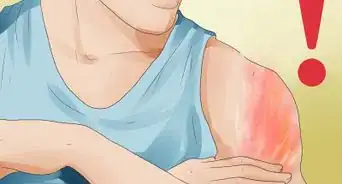
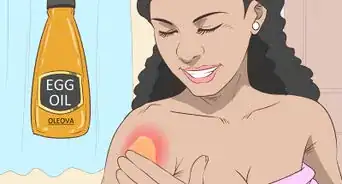


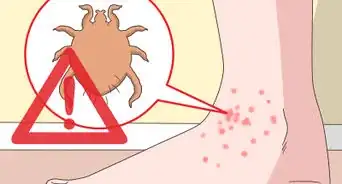
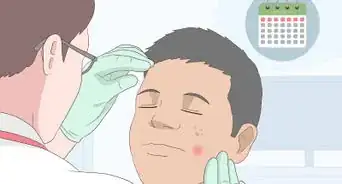
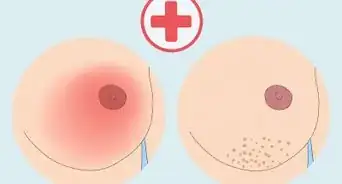

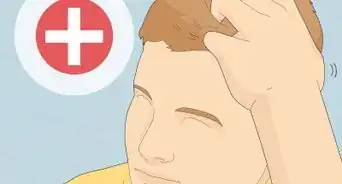


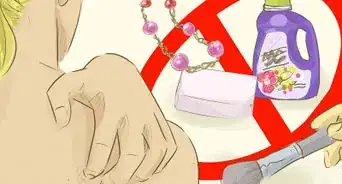
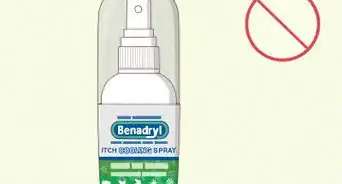
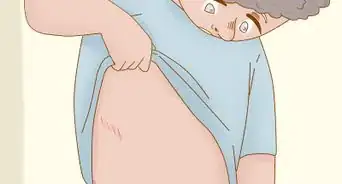









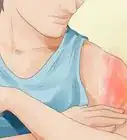
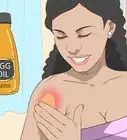






































Medical Disclaimer
The content of this article is not intended to be a substitute for professional medical advice, examination, diagnosis, or treatment. You should always contact your doctor or other qualified healthcare professional before starting, changing, or stopping any kind of health treatment.
Read More...